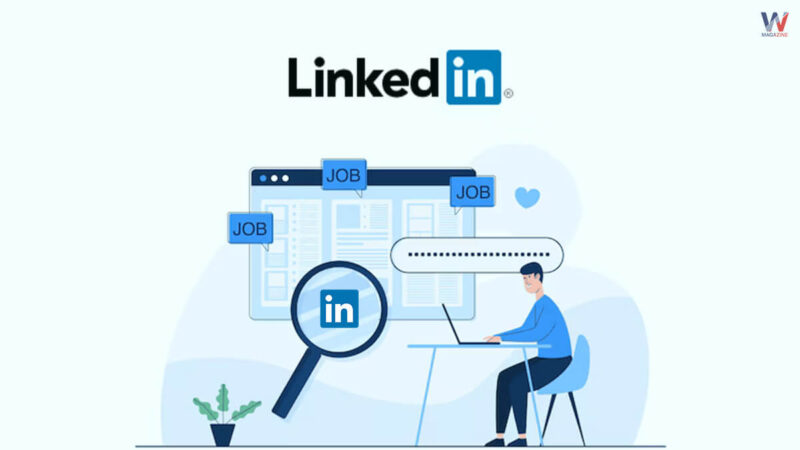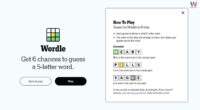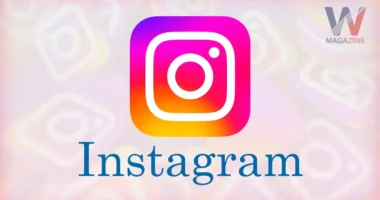Table of Contents
LinkedIn is a social media platform focused on business and employment. It was founded on May 5, 2003, by Reid Hoffman and Eric Ly. Owned by Microsoft since December 2016, LinkedIn serves as a tool for professional networking and career development. Users can upload their resumes and employers can post job vacancies. Starting in 2015, a significant part of LinkedIn’s income has been from selling data about its users to recruiters and sales experts. The platform boasts over a billion registered users from more than 200 countries.

On LinkedIn, both employees and employers can set up profiles and build connections that mirror their real-life professional networks. Users can also invite others to join LinkedIn, whether they are already members or not. Additionally, the platform allows users to organize events, join groups, write/publish articles and share photos and videos.
Company Overview
LinkedIn was started in Mountain View, California and is now based in Sunnyvale, California. As of May, 2024, it has 36 offices worldwide and about 18,500 people working for the company.
Ryan Roslansky is the current CEO of LinkedIn. The previous CEO Jeff Weiner, now acts as the Executive Chairman, while LinkedIn’s founder, Reid Hoffman, is the chairman of the board. The company received initial funding from several sources including Sequoia Capital, Greylock, Bain Capital Ventures, Bessemer Venture Partners and the European Founders Fund. LinkedIn became profitable in March 2006. By January 2011, it had raised around $103 million which is about $138 million when adjusted for 2023 values.
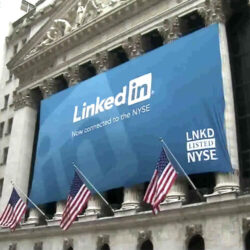
LinkedIn went public in January 2011 and started trading its shares on the New York Stock Exchange under the ticker “LNKD” in May of that year.
History
Founded between 2002 to 2011
LinkedIn was founded in December 2002 by Reid Hoffman, along with colleagues from PayPal and Socialnet.com including Allen Blue, Eric Ly and others. The company’s initial funding was led by Sequoia Capital in late 2003. By August 2004, LinkedIn had grown to 1 million users. In March 2006, the company celebrated its first profitable month. The user base expanded to 10 million by April 2007 and in 2008, LinkedIn introduced a mobile version of their site.
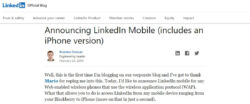
Significant investments marked LinkedIn’s growth, including a $53 million investment from venture capital firms like Sequoia Capital and Greylock Partners in June 2008, which valued the company at approximately $1 billion.  The following year, LinkedIn expanded internationally, opening offices in Mumbai and Sydney and later established its International Headquarters in Dublin, Ireland, in 2010. That same year, LinkedIn received a $20 million investment from Tiger Global Management, raising its valuation to around $2 billion. In 2010, LinkedIn also made its first acquisition, Mspoke and continued to enhance its premium services.
The following year, LinkedIn expanded internationally, opening offices in Mumbai and Sydney and later established its International Headquarters in Dublin, Ireland, in 2010. That same year, LinkedIn received a $20 million investment from Tiger Global Management, raising its valuation to around $2 billion. In 2010, LinkedIn also made its first acquisition, Mspoke and continued to enhance its premium services.
The expansion into India began in 2009, with efforts focused on understanding the local professional culture and educating users on making the most of LinkedIn for career advancement.
2011 to Present
LinkedIn went public in January 2011 and on its first trading day in May, its shares surged to close at more than double the initial price. Since the IPO, LinkedIn has continually updated its platform to release new features faster. In 2011, the company also saw significant revenue from advertising, even outperforming Twitter.

In 2014, LinkedIn expanded its presence in San Francisco by leasing a new 26-story building at 222 Second Street to house up to 2,500 employees. This move aimed to consolidate its San Francisco staff, including sales, marketing and research teams, under one roof. The company experienced a dramatic drop in share value in February 2016 after an earnings report, losing $10 billion in market value in one day.
In 2016, LinkedIn was blocked in Russia due to a law requiring social media platforms to store Russian users’ data on local servers. That same year Microsoft announced it would buy LinkedIn for $26.2 billion, the largest acquisition by Microsoft at that time. The acquisition was completed in December, allowing LinkedIn to maintain its brand and independence.
Post-acquisition, LinkedIn continued to grow, adding 200 new jobs in its Dublin office by the end of 2016. Since 2017, the platform has been widely used by B2B marketers to share content. LinkedIn also revamped its desktop interface to align more closely with its mobile app although some users reported missing features and performance issues.
In 2019, LinkedIn launched the “Open for Business” feature to help freelancers get discovered and started the LinkedIn Events feature to facilitate professional meet-ups. By June 2020, Jeff Weiner stepped down as CEO, with Ryan Roslansky taking over. The COVID-19 pandemic led to a reduction of 960 jobs in mid-2020 as part of a company-wide restructuring.
Data security became a concern when reports in 2021 claimed that millions of LinkedIn profiles were exposed online. However, LinkedIn stated these were not due to a breach but were data scraped from the platform. In October 2021, LinkedIn ended its operations in China citing challenging operating conditions.
In 2022, LinkedIn’s revenue saw significant growth and in May 2023, although LinkedIn reduced its workforce by 716, it planned to create 250 new roles, aiming for operational efficiency and adaptability in changing economic conditions.
LinkedIn Acquisitions Table
| Acquisition Date | Company (Business Type) | Description |
| August 4, 2010 | Mspoke (Adaptive personalization) |
Improved LinkedIn Recommendations |
| September 23, 2010 | ChoiceVendor (Social B2B Reviews) |
Allows users to rate and review B2B services |
| January 26, 2011 | CardMunch (Social Contacts) |
Converts business cards into digital contacts |
| October 5, 2011 | Connected (Social CRM) |
Enhanced LinkedIn’s networking features |
| October 11, 2011 | IndexTank (Social search) |
Improved LinkedIn’s search capabilities |
| February 22, 2012 | Rapportive (Social Contacts) |
– |
| 2012 | ESAYA Inc. (Social Content) |
Migrated email, contacts, and calendar data |
| May 3, 2012 | SlideShare (Social Content) |
Helped users discover others through shared content |
| April 11, 2013 | Pulse (Web/Mobile newsreader) |
Became a platform for professional publishing |
| February 6, 2014 | Bright.com (Job Matching) |
– |
| July 14, 2014 | Newsle (Web application) |
Tracked news about personal contacts and celebrities |
| July 22, 2014 | Bizo (Web application) |
Targeted advertising to professionals |
| March 16, 2015 | Careerify (Web application) |
Used social media for hiring |
| April 2, 2015 | Refresh.io (Web application) |
Provided insights about people before meetings |
| April 9, 2015 | Lynda.com (eLearning) |
Offered video courses on various professional skills |
| August 28, 2015 | Fliptop (Predictive Sales and Marketing) |
Applied data science to sales strategies |
| February 4, 2016 | Connectifier (Web application) |
Enhanced recruiting capabilities |
| July 26, 2016 | PointDrive (Web application) |
Improved sales presentations |
| September 16, 2018 | Glint Inc. (Employee engagement) |
Focused on improving workplace engagement |
| May 28, 2019 | Drawbridge (Marketing Solutions) |
– |
This table summarizes LinkedIn’s key acquisitions over the years, including the types of businesses acquired and their contributions to LinkedIn’s services and capabilities.
Perkins (2013-2015)
In 2013, LinkedIn was sued in a class action lawsuit called Perkins vs. LinkedIn Corp. The lawsuit accused LinkedIn of sending invitations to join the platform to people in a member’s email address book without their permission. While the court agreed that LinkedIn had permission to send the initial invitation, it found that LinkedIn did not have permission to send two follow-up reminder emails. In 2015, LinkedIn settled this lawsuit for $13 million. Affected members likely received an email about the settlement with the subject line “Legal Notice of Settlement of Class Action”.
hiQ Labs (2017-Present)
In May 2017, LinkedIn sent a cease-and-desist letter to hiQ Labs, a startup that analyzes data from public profiles. LinkedIn accused hiQ of illegally scraping data from its platform, violating laws related to computer fraud and copyright. hiQ responded by suing LinkedIn, asking a court in San Francisco to stop LinkedIn from blocking its access to public profile data while the lawsuit was considered. The court initially sided with hiQ, issuing a preliminary injunction that allowed hiQ to continue accessing the data. LinkedIn appealed this decision but in September 2019, the appeals court upheld the injunction, continuing to allow hiQ access. The legal dispute between LinkedIn and hiQ is still ongoing.
Membership Growth
As of 2015, LinkedIn’s user base exceeded 400 million members across more than 200 countries, significantly more than Viadeo, which had 50 million members as of 2013. The platform experienced rapid growth around 2011, with an average of two new members joining every second. By 2020, the number of LinkedIn members had risen to over 690 million. As of September 2021, LinkedIn reported having more than 774 million registered users from various countries around the world.
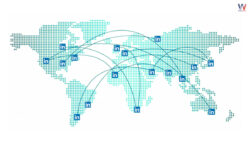
Platform & Features
User Profile & Network
LinkedIn allows users to set up profiles that typically include information similar to a resume, such as work experience, education and skills, along with a personal photo. Employers can post job listings and search for potential candidates. Users can find job opportunities, professional connections and business prospects that are recommended by people within their network. They can also save job listings to apply for later and follow different companies to receive updates.
Members can connect with each other, forming an online network that reflects their real-world professional relationships. They can invite anyone to become a connection and seek introductions to people connected to their contacts, extending up to third-degree connections. This system uses what is known as a “gated-access approach” to help build trust among users by requiring an existing connection or a mutual contact’s introduction to connect with professionals.
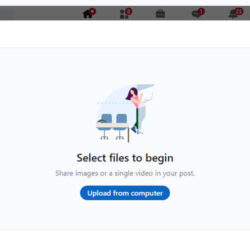
LinkedIn provides various ways for users to interact and engage with each other. Members can like posts, congratulate others on personal milestones like birthdays or job promotions and send direct messages. LinkedIn also introduced video sharing capabilities where users can post videos with text and filters.
Users have the option to write and publish posts and articles directly on LinkedIn to share with their network.
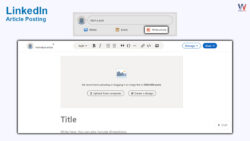
Since September 2012, LinkedIn allows users to endorse each other’s skills although it’s limited to positive endorsements only. The platform uses algorithms to suggest possible skills for endorsements which can sometimes lead to suggestions for skills that members do not actually possess and members cannot opt out of receiving these endorsement solicitations.
Applications
LinkedIn offers two main types of applications: external third-party apps that work with LinkedIn’s API and applications that can be added directly to a user’s profile page.
External Third-Party Applications
In February 2015, LinkedIn updated its terms of use for its developer API, which is a set of tools that allow both companies and individuals to interact with LinkedIn’s data. People can use these tools to create apps that must be approved by LinkedIn and require permission from users to access their data.
Some of the standard uses of LinkedIn’s API include:
- Signing into external services using LinkedIn credentials.
- Adding information or features to a user’s LinkedIn profile.
- Sharing content or articles directly to a user’s LinkedIn timeline.
Embedded in User Profiles
In October 2008, LinkedIn launched a platform that lets external online services integrate directly into a member’s profile page. Initial offerings included:
- An Amazon Reading List for members to show the books they are reading.
- Connections to travel organizer Tripit.
- Blogging applications from Six Apart, WordPress and TypePad that let members display their latest blog posts on their LinkedIn profiles.
In November 2010, LinkedIn expanded this by allowing businesses to list products and services on their company profile pages. Users could recommend these products and write reviews. However, over time, some services like Amazon’s Reading List were discontinued.
Launch Mobile Site
In February 2008, LinkedIn launched a mobile version of its site available in six languages: Chinese, English, French, German, Japanese and Spanish. This made it easier for users to access LinkedIn from their mobile devices.
In January 2011, LinkedIn acquired CardMunch, a mobile app that scans business cards and converts them into digital contacts. This app was integrated into LinkedIn’s mobile offerings by June 2013, enhancing users’ ability to network efficiently.
In October 2013, LinkedIn introduced a service called “Intro” for iPhone users. This service would display a small thumbnail of a person’s LinkedIn profile within emails when viewed through the native iOS Mail app. To provide this feature, all emails sent and received on the iPhone were routed through LinkedIn servers. However, this raised significant privacy concerns. Security experts pointed out that it could violate organizational security policies and noted that it resembled a man-in-the-middle attack where data is intercepted during transmission.
Groups
LinkedIn supports the creation of interest groups which as of 2012 included over 1.24 million groups. The size of these groups can range from just one member to as many as 744,662. These groups provide a space for discussions which are moderated by the group owners and managers.
Groups on LinkedIn can be private, where only members can access content or they can be open, allowing any internet user to read the discussions. However, to participate in posting messages, joining the group is necessary.
Despite their usefulness, these groups often attract spam posts. As a result, LinkedIn has implemented several measures to reduce spam although it continues to be an issue. For example, LinkedIn recently removed the ability for group owners to see the email addresses of new members which was a method used to check if they were likely to be spammers.
Groups keep their members updated through emails that highlight the most active discussions and important updates within the group.
Enhancements & Changes
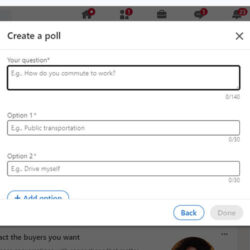
In December 2011, LinkedIn started to introduce polls within groups to engage members more interactively. In November 2013, LinkedIn added Showcase Pages, which allowed businesses to highlight specific aspects of their brand. By 2014, LinkedIn decided to phase out Product and Services Pages, focusing more on enhancing the utility of Showcase Pages.
Knowledge Graph
LinkedIn has developed a complex system known as a knowledge graph, which is essentially a vast network of connected data. This system includes information about people, organizations and groups. The knowledge graph is used to help find and establish connections among individuals working in the same field or organization or within the same professional network.
The knowledge graph allows LinkedIn to perform detailed searches around each listed entity like a person or company to find relevant updates and connections. This capability is also used to enhance LinkedIn’s machine learning models. These models can learn to predict new characteristics or relevant information about an entity which can be useful for providing summarized views or detailed analytics on the platform.
Discontinued Features
In January 2013, LinkedIn discontinued a feature called LinkedIn Answers. This feature launched in 2007, allowed users to ask questions within their network and receive ranked answers. The company decided to end this feature to focus on developing new ways for users to share and discuss professional topics.

LinkedIn also retired InMaps in 2014, a tool available since January 2011 that helped users visualize their professional networks graphically.
The LinkedIn Referrals feature which was a part of the platform to help users share job referrals within their networks was discontinued in May 2018.
Stories
In September 2021, LinkedIn ended its Stories feature similar to those on other social media platforms like Instagram and Snapchat where users could post temporary content. This feature was initially launched globally in October 2020 but was discontinued less than a year later.
Usage
Personal Branding
LinkedIn is a powerful tool for personal branding, which involves actively managing and showcasing your professional identity and unique values to enhance your career opportunities. It has transformed from a simple job-seeking site to a robust social network where users can establish and promote their personal brands.
“According to career experts like Sandra Long & Pamela Green: Personal branding is about controlling your professional image to create a specific emotional experience in others when they interact with you.”
This involves displaying a carefully crafted persona across various networks, including LinkedIn that highlights your expertise and helps you forge new connections.
Building Your Presence
LinkedIn encourages users to complete their profiles comprehensively, which helps in increasing their visibility not only within the platform but also on the internet. This is supported by tools like the Profile Strength Meter. Being active in professional groups and adding videos to your profile are other ways to strengthen your presence. Some users even hire professional photographers for a better profile picture and experts recommend always including a photo to avoid common pitfalls in profile creation.
In 2012, LinkedIn launched the Influencers program, which allows selected global leaders to share their insights with the community. This program includes notable figures like Richard Branson and Bill Gates and is by invitation only. It serves as a platform for these influencers to contribute their knowledge and experiences thereby enriching the LinkedIn community.
Job Seeking
LinkedIn is widely recognized as a leading digital platform for professional networking. Jack Meyer describes it as the premier site for professionals to connect online. In Australia, for example almost all working professionals are on LinkedIn, indicating a high chance that potential employers are also using the site.
LinkedIn offers various tools to assist job seekers. Users can research potential employers by simply searching for a company’s name, which brings up information such as employee demographics, common job titles, office locations and lists of current and former employees. In 2011, LinkedIn introduced an “Apply with LinkedIn” button on job listings allowing users to apply for jobs using their LinkedIn profiles as resumes.
LinkedIn helps users build their professional networks. People directly connected are called “first-degree connections.” Friends of friends are “second-degree connections” and so on. This network helps increase the visibility of a user’s profile in search results, making it more likely they’ll be noticed by potential employers.
LinkedIn also offers a service called Profinder, which helps freelancers find project work. For a monthly fee, freelancers can bid on projects posted by individuals and businesses in over 140 service areas including photography and accounting.
LinkedIn has made it easier to connect with others by removing the requirement that connections should have a prior relationship like working or studying together. Since 2017, users can connect with anyone up to a limit of 30,000 people. This change has made LinkedIn a more proactive tool for networking, helping job seekers and salespeople to expand their opportunities significantly.
Top Companies
LinkedIn publishes annual lists called “Top Companies” which highlight companies in various countries that are most popular among job seekers. These countries include the United States, Australia, Brazil, Canada, China, France, Germany, India, Italy, Japan, Mexico, Spain and the United Kingdom. The rankings are based on the activities of over a billion LinkedIn members globally.
For example in 2019, Alphabet (Google’s parent company) was ranked as the most sought-after company in the U.S., followed by Facebook and Amazon. By 2021, Amazon took the top spot with Alphabet and JPMorgan Chase following in second and third places respectively. These lists started in 2016 and are updated every year to reflect the changing interests of job candidates.
“If you are a graduation student then you must focus on cum laude, summa cum laude and magna cum laude that are Latin honors awarded with high grades. They can help you get better jobs with more preference.”
Recognition Programs
Since 2015, LinkedIn has been recognizing users who create content that gets a lot of interaction and engagement through its annual “Top Voices” rankings. These users are celebrated for their impactful posts and contributions across various industries. In 2020, for example the list included categories like data science and sports and it featured top contributors from multiple countries ranging from Australia to Italy.
LinkedIn also annually ranks the “Top Startups” in over a dozen countries. These rankings are based on several criteria, including how fast the company is growing in terms of employment, how much interest job seekers show in the company, how actively users engage with the company on LinkedIn and the company’s ability to attract top talent. This helps identify startups that are excelling and gaining attention in their respective markets.
Advertising & Research Services
In 2008, LinkedIn introduced LinkedIn DirectAds allowing businesses to sponsor advertisements on the platform. Later, in October 2008 LinkedIn started utilizing its network of 30 million professionals for B2B research, which looked to be a promising revenue model compared to traditional advertising.
By July 23, 2013, LinkedIn had launched Sponsored Updates. This service lets individuals and companies pay to have their posts promoted across the LinkedIn network. This approach is a typical method used by social media platforms to earn revenue.
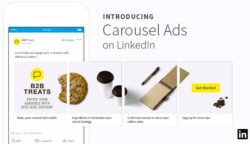
In 2018, LinkedIn added carousel ads to its advertising options. Carousel ads let businesses display a series of images or cards that users can swipe through. Each card can have its own image, headline and description. These ads are versatile and can be used for various marketing goals, including product promotions, driving traffic to websites, generating leads or enhancing brand awareness.
Business Manager
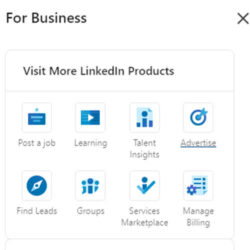
LinkedIn has recently introduced a tool called Business Manager. This platform is designed to help large companies and agencies streamline their management processes. It provides a centralized location for managing personnel, advertising accounts and business pages making it simpler for businesses to organize and coordinate their LinkedIn activities.
Publishing Platform
In 2015, LinkedIn enhanced its publishing platform by adding an analytics tool. This tool helps authors monitor how their posts perform by providing detailed insights into the traffic each post receives. This feature has attracted more users to LinkedIn especially those interested in tracking and improving the reach and impact of their published content.
Future Plans
Economic Graph
In 2012, LinkedIn’s CEO Jeff Weiner envisioned creating an “economic graph” a concept inspired by Facebook’s social graph. The idea is to map out the global economy digitally showing all the connections between different economic elements. This includes details about companies, jobs, skills needed for these jobs, volunteer opportunities, educational institutions and other relevant content.
The main aim is to list every job available worldwide, the skills required for these jobs, the professionals who qualify for them and the companies (both nonprofit and for-profit) where they work. By doing this, LinkedIn hopes to make the global economy and job market more transparent and efficient.
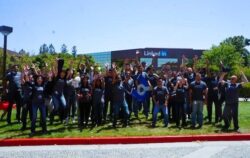
By June 2014, LinkedIn had developed a new search architecture called “Galene” to help users access this vast amount of data more effectively. For example users could search for “Engineers with Hadoop experience in Brazil” and get precise results.
LinkedIn uses data from the economic graph to analyze various job market trends. For instance, they’ve studied the preferred cities for recent college graduates, regions with a high concentration of technology skills and common career transitions. Additionally, LinkedIn has shared this data with entities like the City of New York to assist in projects like the “Tech Talent Pipeline” which aims to identify in-demand tech skills in the city.
Impact on Networking
LinkedIn is widely recognized as the essential tool for professional networking. TechRepublic describes it as the standard resource for connecting with other professionals. Its effectiveness in helping forge business relationships is well acknowledged.
“Forbes has highlighted LinkedIn as an invaluable social networking tool for job seekers and business professionals, stating it offers significant advantages over other platforms.”
LinkedIn’s success has also sparked the creation of other specialized networking platforms. For example Eddie Lou a co-founder inspired by LinkedIn, launched Shiftgig in 2012. Shiftgig focuses on networking and job opportunities for hourly workers, demonstrating the influence of LinkedIn on other entrepreneurial ventures in the professional networking space.
Criticism & Controversies
Controversial Design Choices
- Endorsement Feature: LinkedIn’s feature that allows users to endorse each other’s skills has faced criticism. The main issue is that these endorsements may not always be accurate as they can come from people who aren’t actually familiar with the user’s skills. In response to the criticism LinkedIn made adjustments in October 2016 to emphasize endorsements coming from coworkers and mutual connections.
- Use of Email Accounts for Sending Invitations: LinkedIn has been criticized for how it handles “invite emails.” The platform has sent invitations to people in members’ Outlook contacts without their clear consent, making it seem as though the invitation emails were sent by the members themselves. If no response is received, LinkedIn often sends several follow-up reminders. This practice led to a lawsuit in the U.S., where LinkedIn was accused of hijacking email accounts and spamming. The company defended itself by claiming it was helping users build their networks but the practice was generally seen as invasive.
- Invitation Spam: During the sign-up process, LinkedIn encourages new users to enter their email password and offers to send invitations to contacts from their address book. This feature has been problematic because it automatically selects all contacts misleading users to believe that invitations would only be sent to selected addresses. LinkedIn faced legal action because of these practices particularly for sending follow-up invitations without additional permissions. The lawsuit, which argued these actions were not protected under free speech because they were essentially advertisements, was settled in favor of the LinkedIn members.
- Interception of Emails: At the end of 2013, LinkedIn was involved in another controversy when it was revealed that the LinkedIn app had intercepted users’ emails and moved them to LinkedIn servers without clear user consent, effectively conducting a man-in-the-middle attack to access user data. This action raised significant privacy and security concerns.
Security Incidents
2012 Hack
In June 2012, around 6.5 million LinkedIn passwords were stolen by hackers and posted online. This security breach was widely criticized because LinkedIn had not adequately secured the passwords (they weren’t “salted” and were hashed with a weak method, SHA-1). After this incident, LinkedIn recommended that all users change their passwords. In response to the breach, LinkedIn introduced two-factor authentication in May 2013 to enhance account security.
In May 2016, it was discovered that more LinkedIn account details, 117 million usernames and passwords were being sold online. These details were part of the original 2012 hack indicating that the initial estimate of compromised accounts was too low.
Potential 2018 Breach & Extortion

In July 2018, there were reports of LinkedIn email and password details being exposed on the dark web. Following this, some users received extortion emails threatening to release embarrassing videos unless they paid a ransom. LinkedIn suggested these incidents were linked to the 2012 hack, although there was no direct evidence to confirm this connection.
2021 Breaches
Two major data breaches were reported in 2021. The first, in April potentially impacted 500 million users, while a second breach in June could have affected 92% of LinkedIn users. The exposed data included contact and employment information. LinkedIn clarified that this data was collected through web scraping of publicly available information from LinkedIn and other websites rather than through a direct breach of LinkedIn’s systems.
Malicious Behavior on LinkedIn
Phishing Attacks & Surveillance
- Operation Socialist: In 2013, leaked documents by Edward Snowden revealed that the UK’s Government Communications Headquarters (GCHQ) compromised employees of the Belgian telecom network Belgacom by tricking them into visiting a fake LinkedIn page.
- Iran-Based Cyber Threats: In 2014, Dell SecureWorks found that an Iran-based group had created 25 fake LinkedIn accounts. These accounts which appeared to be fully developed personas were used to launch spearphishing attacks and lead victims to malicious websites.
- Chinese Espionage: French security agencies reported that Chinese spies used LinkedIn to target thousands of business and government officials to gather intelligence. Similarly, in 2017, German security officials reported that Chinese intelligence services used fake LinkedIn profiles to collect information on German politicians and government officials.
- Phishing Prevalence: In 2022, LinkedIn was identified as the brand most commonly imitated in phishing scams. By August 2023, several LinkedIn users were targeted by hackers in phishing attempts that involved account hijackings and ransom demands to avoid account deletion.
Misinformation Issues
LinkedIn has also been criticized for how it handles misinformation and disinformation on its platform. Issues have included the spread of false information about COVID-19 and misleading claims regarding the 2020 US presidential election. The platform has faced challenges managing fake profiles and the dissemination of false information.
Privacy Policy Concerns
The German consumer organization Stiftung Warentest, has criticized LinkedIn for having a privacy policy that they believe unfairly favors the company at the expense of users. According to them, LinkedIn’s policy restricts user rights too much while giving the company too many privileges.
There have also been complaints that LinkedIn does not adequately respond to requests from consumer protection centers, suggesting potential issues in how the company handles privacy concerns raised by users or consumer advocacy groups.
Research on Labor Market Effects
In 2010, a study reported in the Social Science Computer Review by economists Ralf Caers and Vanessa Castelyns revealed how LinkedIn and Facebook have become valuable tools for recruiters in Belgium. They sent questionnaires to users of both platforms and found that recruiters use these sites not only to find job applicants for professional roles but also to gather extra details about them, influencing which candidates are called for interviews.
A 2017 analysis in Research Policy looked at how PhD holders use LinkedIn. The findings suggested that PhDs in the industry are more likely to maintain LinkedIn profiles and large networks especially if they have international collaborators or have moved abroad after their PhD.
Also in 2017, sociologist Ofer Sharone explored the impact of LinkedIn and Facebook on the job market. He interviewed unemployed workers and concluded that these social networks tend to filter candidates in ways that are not strictly merit-based, adding new kinds of pressure on job seekers to adapt their career management to fit these platforms.
In October 2018, research by Foster School of Business professors Melissa Rhee, Elina Hwang and Yong Tan found that while many job seekers try to network on LinkedIn with professionals in target companies or fields this strategy doesn’t necessarily lead to job referrals. In fact, employees from the target companies or fields were less likely to refer candidates who were too similar to themselves, possibly to avoid competition. However, employees at higher levels were more likely to make referrals.
By July 2019, research by sociologists Steve McDonald, Amanda K. Damarin, Jenelle Lawhorne and Annika Wilcox, based on interviews with 61 HR recruiters in the Southern United States, showed a split job market. Recruiters looking for low-skilled workers typically used online job boards, whereas those seeking high-skilled or supervisory roles targeted employed individuals not actively looking for a change but open to opportunities, highlighting a divided, competitive job market.
“A 2001 study in the ACM SIGGROUP Bulletin expressed concern about the lack of digital tools for blue-collar workers suggesting that this oversight might empower managers at the expense of workers.”
In a 2019 study, economists Laurel Wheeler, Robert Garlick and their team showed that training job seekers in South Africa to use LinkedIn boosted their employment chances by about 10% for up to a year by easing the flow of information between job seekers and employers. However, the training did not lower the costs of job searching.
A 2020 study in Applied Economics by Steffen Brenner and colleagues found that people with higher career status are more likely to engage in professional networks like LinkedIn, rather than those who are dissatisfied seeking networking opportunities to advance.
International Restrictions
In 2009, LinkedIn users in Syria discovered they could no longer access the site because LinkedIn had stopped accepting connections from Syrian IP addresses. The company explained that this was due to US laws controlling exports and imports. As a result, LinkedIn also restricted access from several other countries including Cuba, Iran, North Korea, Russia, Sudan and Syria.
By February 2011, LinkedIn faced a temporary block in China following calls for a “Jasmine Revolution.” The block was likely due to LinkedIn’s ability to provide access to Twitter which was already banned in China. However, the block was lifted after just one day.
In 2014, LinkedIn launched a Chinese version of its site called “领英” (Lǐngyīng), which translates to “leading elite.” Despite launching in China, LinkedIn’s CEO Jeff Weiner admitted that they would need to censor some user content to comply with Chinese regulations, although he believed the benefits of being in China outweighed these issues. From Autumn 2017 however, it became impossible to post jobs in China from Western countries.
In 2016, a Moscow court decided that LinkedIn must be blocked in Russia because it didn’t comply with a law requiring Russian citizens’ data to be stored within the country. This law had been in place since 2014. Consequently, all Russian ISPs started blocking LinkedIn and its mobile app was also removed from both Google Play and the iOS App Store in Russia. In July 2021, LinkedIn was also blocked in Kazakhstan.
In October 2021, after several academic and journalistic users in China were warned that their profiles would be blocked, Microsoft announced that LinkedIn would close down its operations in China. The company cited increasing difficulties with the regulatory environment. They planned to replace LinkedIn with a local app called InJobs, specifically designed for the Chinese market. By May 2023, LinkedIn announced that InJobs would be phased out by August 9, 2023.
Open-Source Contributions
Since 2010, LinkedIn has shared a variety of its internal technologies, tools and software products with the open-source community. One of the most significant contributions is Apache Kafka, a technology developed by LinkedIn in 2011 and then made available to the public as open-source.
Research Using Data from the Platform
LinkedIn’s extensive data collection has been a valuable resource for researchers, especially those in fields like data science and machine learning. They use this data to gain insights and develop new features for products. For instance, research using LinkedIn data has shown that people are more likely to lie about their hobbies than their work experience on their online resumes.
“LinkedIn is more than just a professional networking site, it’s a vibrant ecosystem where opportunities meet potential and where every connection is a doorway to professional growth.”
